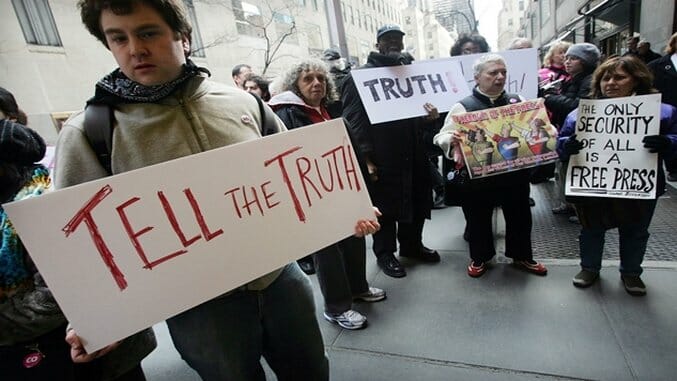From Trump to Police Shootings: Mainstream Media Has an Obligation Not to Regurgitate the Official Line Without Context or Skepticism
The Over-reliance on Official Sources, and the Pratfalls of False Objectivity

Reporters will likely have less direct access to the President-elect than any administration in modern history. President-elect Donald Trump hasn’t held a traditional press conference since July. Since the election, his biggest olive branch to the press was inviting news celebrities to a useless off-the-record meeting at his Mar-a-Lago estate in Palm Beach, Fla. Photos were, naturally, allowed. What remains is a one-direction communication channel of outbursts, unfounded claims, outright lies, and falsehoods that stream from the president-elect’s Twitter account. It leaves little room for rebuttal, follow-up, or challenge. In this environment, reporters will have an even greater responsibility not to simply repeat and report his flexible truths without context, verification, and skepticism.
Blind service to the ideas of “fairness” or “objectivity” at the opposition of verifiable truth is neither fair nor objective, and instead presents false equivalencies. Imagine a debate between the Flat Earth Society and Magellan, with reporters giving equal time and credence to both side’s statements. Now look at the mainstream media’s treatment of a verifiably false tweet from Trump last year. The tweet re-tweeted a photo, that’s since been deleted, that claimed 81 percent of murdered white people are killed by black people-a lie that originated with a white supremacist on Twitter. The actual stats, according to the FBI, are basically the opposite: Whites killed by blacks, 15 percent. Whites killed by whites, 82 percent. Dismayingly, Fox News wrote, “Trump Tweet on Black Crime Sets Off Firestorm.” The Hill reported “Trump Takes Heat for Tweet About Black Murder Rates,” and on and on.
-

-

-

-

-

-

-

-

-

-

-

-

-

-

-

-

-

-

-

-

-

-

-

-

-

-

-

-

-

-

-

-

-

-

-

-

-

-

-

-







































